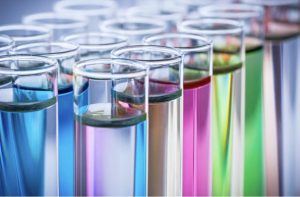BY Mohammad Musa

Color is the aspect of appearance of objects and light sources that may be described in terms of hue, lightness and saturation. In fact, people judge fruits and vegetables by the richness of their colors.
Coloring ingredients include: natural colors, derived primarily from vegetable sources and sometimes called vegetable dyes, inorganic pigment combinations of organic and metallic compounds (called lakes) and synthetic coal-tar substances.
The chemistry of color covers the way in which different frequencies and wavelengths of visible light are absorbed or reflected by molecules, known as pigments.These pigments have specific compositions and configurations that correspond to their respective colors.
There are Examples of synthetic colors, products of the chemical manufacturing industry which we tend to take so much for granted these days.
- These colors commonly serve purely aesthetic purposes but in some cases may be used to convey important information like the traffic light, color coded electrical cables etc.
- Another color is synthetic colors which are used in clothes we wear, in paints, plastic articles, magazines and newspapers, colors are introduced into these materials using substances known as dyes and pigments.
The important difference between dye and pigment is their relative solubility. That is to say dyes are soluble while the pigments are essentially insoluble in the liquid media in which they are dispersed.
Organic compound dyes possess color because they:
- Absorb light in visible spectrum (400-700)
- Exhibit resonance of electrons, which is a stabilizing force in organic compounds
- Have at least one chromophore(color bearing group)
- Have a conjugated system(a structure with alternating double and single bonds)
When any of these features is lacking from the molecular structure, the color is lost.
